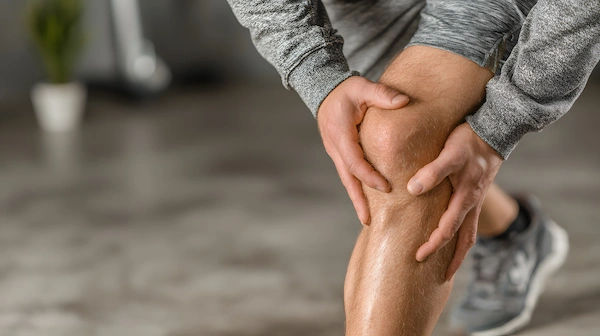- male
- 25 Years
- 14/08/2025
20 days post ACL surgery with hamstring autograft and partial medial meniscectomy, my operated leg looks much thinner and weaker now. The calf has lost size and firmness too. Is this muscle loss normal after surgery and how long does it usually take to regain the original leg diameter and strength?
Answered by 1 Apollo Doctors
Yes, the thinning and weakening of your operated leg, including the calf, is a common and normal occurrence after ACL surgery with hamstring autograft and partial meniscectomy. This muscle loss, known as disuse atrophy, is primarily due to the limited activity and immobilization in the initial post-operative period. The recovery timeline for regaining original leg diameter and strength varies, but it can take several months, typically 9 to 12 months, with a gradual progression through physical therapy
Dr. Kamran Suggests...
Consult a Orthopaedician
Answered 14/08/2025
0
0

More Orthopaedics Health Queries
View allCan you help me understand my MRI results for my ACL injury do I need surgery or can physio alone help it heal Also is there a tear in the lateral meniscus and how long will recovery take
share mri report
Answered by 1 Apollo Doctors
I'm really worried about my elbow. I heard the term "maas fatna" and I'm not totally sure what it means. If there's a moss burst in the elbow, is it always necessary to put a plaster on it? Could there be reasons not to use one, or are there any other treatments or steps I should consider?
Maas fatna" is a colloquial term in some Indian languages, which roughly translates to "muscle burst" or "muscle strain," often referring to a minor injury, such as an elbow blow or a bruise. In the case of an elbow "moss burst" (likely referring to a minor elbow injury or bruise), a plaster might not be strictly necessary. However, it depends on the severity of the injury. For minor elbow injuries: 1. *Apply ice*: Wrap an ice pack or a cold compress in a cloth and apply it to the affected area for 15-20 minutes, 3-4 times a day. 2. *Use a compression bandage*: A compression bandage can help reduce swelling. 3. *Elevate the elbow*: Keep your elbow elevated above the level of your heart to reduce swelling. 4. *Take pain relievers*: Over-the-counter pain medications like acetaminophen (Tylenol) or ibuprofen (Advil) can help manage pain and inflammation. If you experience any of the following, seek medical attention: 1. *Severe pain* 2. *Increasing swelling* 3. *Difficulty moving the elbow* 4. *Coldness or numbness in the arm or hand* 5. *Open wound or bleeding*
Answered by 1 Apollo Doctors
My left collarbone sticks out more on the left side and sits higher than the right, causing constant pain in my right shoulder when I stand for long periods. Can this be fixed with exercises or would I need surgery? Also, could this affect my posture in the long run?
It's important to consult with a medical professional or physical therapist to accurately diagnose the cause of your collarbone and shoulder pain. However, exercises and potential surgery are possible treatment options
Answered by 1 Apollo Doctors
Disclaimer: Answers on Apollo 247 are not intended to replace your doctor advice. Always seek help of a professional doctor in case of an medical emergency or ailment.




